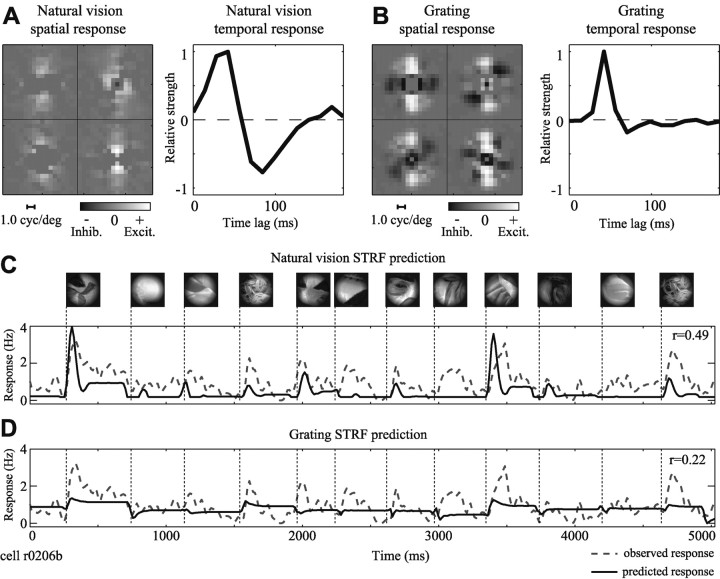Figure 4.
Natural stimulus statistics influence spatial tuning in some neurons. A, Spatial and temporal response functions estimated using natural vision movie data indicate a preference for horizontal stimuli at 1.0 cycle/°. Peak latency is 49 msec, followed by an inhibitory response (77-91 msec). B, The grating spatial response function also shows excitatory tuning to horizontal stimuli, but spatial frequency tuning is higher (2.4 cycles/°). Inhibitory tuning is also clearly present. The time course is quite brief (peak latency, 49 msec) and lacks a strong negative component. C, The natural vision STRF predicts a substantial portion of the observed PSTH (r = 0.49). D, The grating STRF predicts with significantly lower accuracy (r = 0.22; p < 0.05, randomized paired t test). In addition to missing transient responses, it also fails to predict modulation between fixations as well as the natural vision STRF. Inhib., Inhibition; Excit., excitation.

